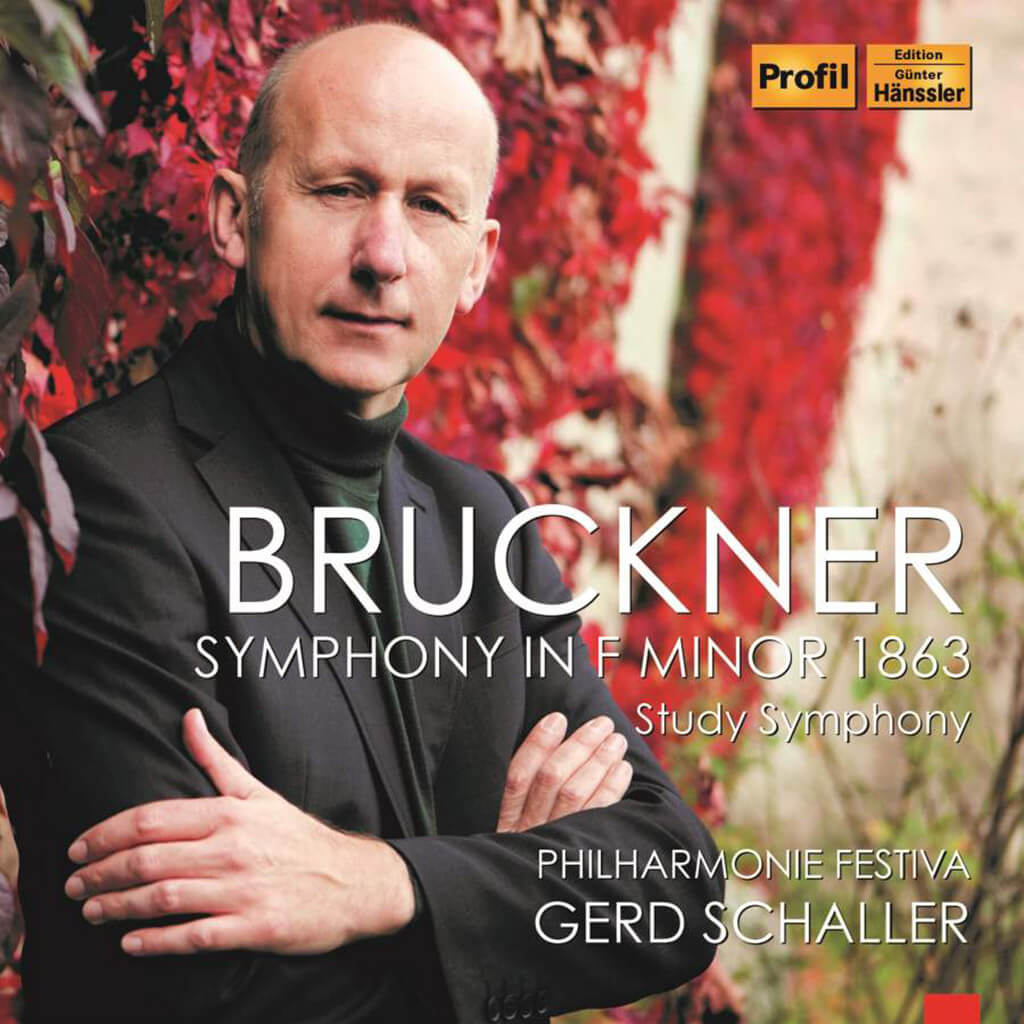
Bruckner aficionados will know that this great Austrian composer wrote nine numbered symphonies, as well as two early more or less “unnumbered” symphonies, Symphony No. 0 in D minor, “Die Nullte” (1864-69) and Symphony in F minor, “Study Symphony” (1863). Although neither work was performed during the composer’s lifetime and he never considered them part of his canon, these symphonies are nonetheless important to an understanding of Bruckner’s growth as a composer; the earliest of these large works, the Symphony in F minor, was composed when he was thirty-nine years old. This new recording of that symphony provides a welcome opportunity to re-evaluate the piece.
In his formative years, Bruckner studied to become a music teacher and organist. In 1845 he became a fully-salaried schoolmaster and assistant organist at St. Florian Monastery. In 1855, he became principal organist at St. Florian and then at the Linz Cathedral the following year. Through these years, he composed a great deal of music, nearly all of it for either the organ or for chorus. Realizing his limitations as a composer, he took lessons with various teachers to fill in the gaps; one of the most important of these was Otto Kitzler (1834-1915), with whom he studied form and orchestration and under whose direction he composed the Symphony in F minor.
It was Kitzler who introduced Bruckner to Wagner’s Tannhäuser — the opera was already more than 15 years old by that time — but there is no clear Wagner influence in the Symphony in F minor; rather, it evokes the work of much older composers such as Schubert, Weber and Franz Lachner (1803-1890) who had become one of Schubert’s closest friends and went on to become court Kapellmeister in Munich. Significantly, shortly after he completed the symphony, Bruckner travelled to Munich and personally presented a copy of the score to the celebrated Lachner.
Although the Study Symphony is conceived on a grand scale, it in no way compares with Bruckner’s later masterpieces in this form. The melodies here tend to be developed in a perfunctory fashion and climaxes tend to be brief and unprepared. The most successful movement is probably the scherzo third movement with its tricky rhythms and a disarmingly beautiful tune in the Trio section.
Unfortunately, while conductor Gerd Schaller has become a Bruckner specialist and is recording all the symphonies using the most authentic editions, his version of the Symphony in F minor is disappointing. He seems to have little idea how to bring the music to life or how to make it all hang together. For a far superior version, I would recommend Vladimir Ashkenazy’s with the Deutsches Symphonie-Orchester Berlin (Ondine 920).
Ashkenazy has a far better sense of when to move ahead and when to be more expansive, and he gets wonderfully expressive playing from his strings. Schaller may be more faithful to the score — he uses a solo cello (as written) instead of the entire cello section, for one of the melodies in the first movement, but Ashkenazy gets the music off the page and finds beauty and drama, where Schaller seems to find nothing but notes.
In terms of tempo, Ashkenazy finds exactly the right speed for the middle section of the second movement, which really makes more sense at his quicker tempo. In the Scherzo, he takes a slower tempo than Schaller does, and again it seems just right, as it allows the listener to better appreciate Bruckner’s clever rhythmic patterns. Finally, Ashkenazy’s coda at the end of the last movement is far more exciting than Schaller’s.
In sum, Bruckner lovers would do well to spend some time with the Study Symphony — Ashkenazy’s version, not Schaller’s. It may not be one of Bruckner’s “greatest” compositions, but done well, it is certainly worth a listen. Ashkenazy’s version is not only better; it has a wonderful bonus, a string orchestra version of the Adagio from Bruckner’s String Quintet that is absolutely transcendent.
LUDWIG VAN TORONTO
Want more updates on Toronto-centric classical music news and reviews before anyone else finds out? Follow us on Facebook or Twitter for all the latest.
- SCRUTINY | TSO Lets Berlioz Do The Talking In Season Opener - September 21, 2018
- RECORD KEEPING | Even Yannick Nézet-Séguin Can’t Make Us Love Mozart’s La Clemenza di Tito - September 6, 2018
- RECORD KEEPING | Giovanna d’Arco With Anna Netrebko Explains Why The Best Operas Survive - August 30, 2018



